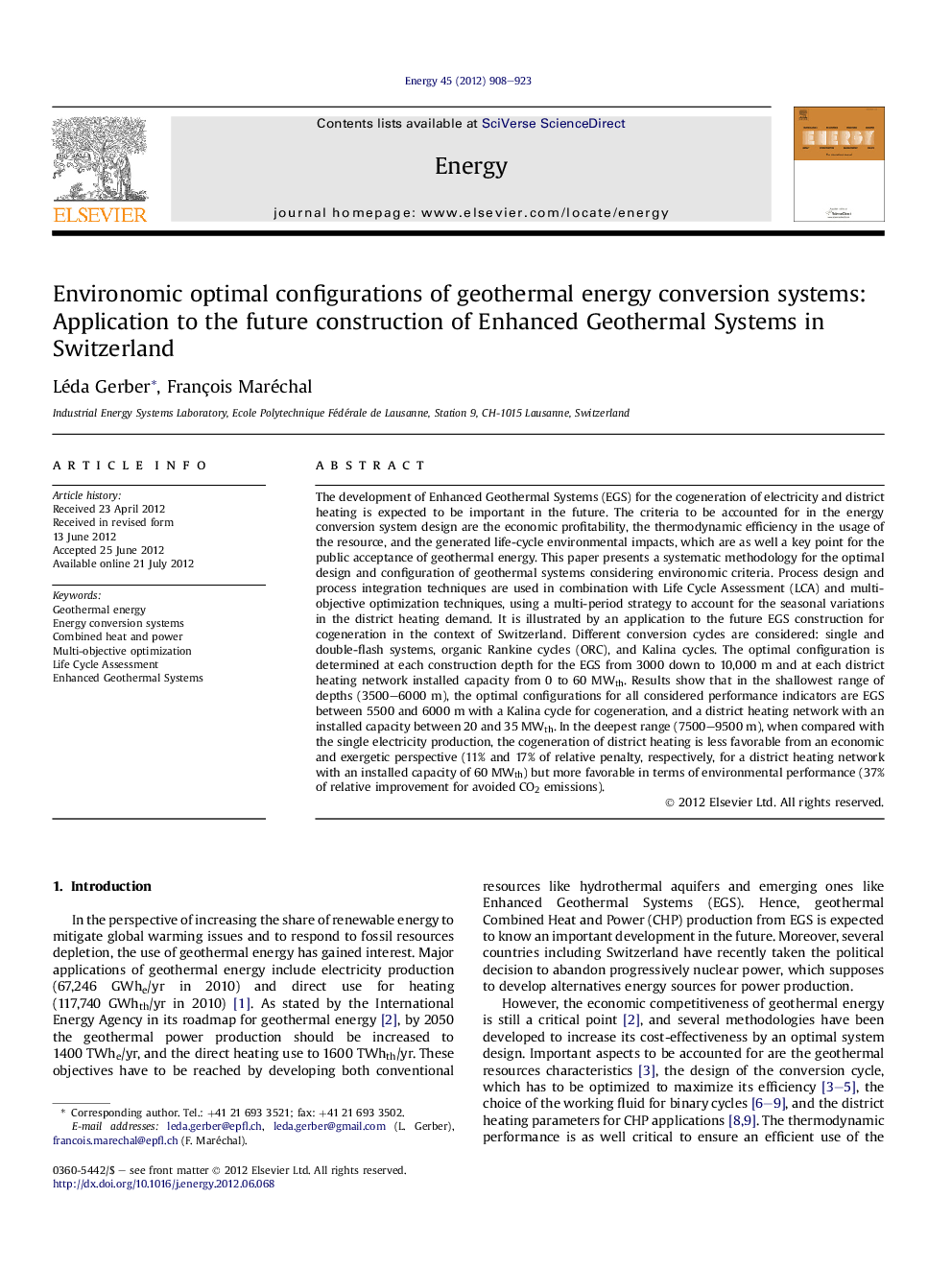| کد مقاله | کد نشریه | سال انتشار | مقاله انگلیسی | نسخه تمام متن |
|---|---|---|---|---|
| 1733738 | 1016144 | 2012 | 16 صفحه PDF | دانلود رایگان |

The development of Enhanced Geothermal Systems (EGS) for the cogeneration of electricity and district heating is expected to be important in the future. The criteria to be accounted for in the energy conversion system design are the economic profitability, the thermodynamic efficiency in the usage of the resource, and the generated life-cycle environmental impacts, which are as well a key point for the public acceptance of geothermal energy. This paper presents a systematic methodology for the optimal design and configuration of geothermal systems considering environomic criteria. Process design and process integration techniques are used in combination with Life Cycle Assessment (LCA) and multi-objective optimization techniques, using a multi-period strategy to account for the seasonal variations in the district heating demand. It is illustrated by an application to the future EGS construction for cogeneration in the context of Switzerland. Different conversion cycles are considered: single and double-flash systems, organic Rankine cycles (ORC), and Kalina cycles. The optimal configuration is determined at each construction depth for the EGS from 3000 down to 10,000 m and at each district heating network installed capacity from 0 to 60 MWth. Results show that in the shallowest range of depths (3500–6000 m), the optimal configurations for all considered performance indicators are EGS between 5500 and 6000 m with a Kalina cycle for cogeneration, and a district heating network with an installed capacity between 20 and 35 MWth. In the deepest range (7500–9500 m), when compared with the single electricity production, the cogeneration of district heating is less favorable from an economic and exergetic perspective (11% and 17% of relative penalty, respectively, for a district heating network with an installed capacity of 60 MWth) but more favorable in terms of environmental performance (37% of relative improvement for avoided CO2 emissions).
► Systematic methodology for the environomic design of Enhanced Geothermal Systems for Combined Heat and Power.
► Combination of process integration, thermoeconomic analysis, Life Cycle Assessment and multiobjective optimization.
► Optimal configurations of future EGS construction in Switzerland at different depths and district heating sizes.
► In shallowest depths, all criteria favor EGS between 5500 & 6000 m with a Kalina cycle, district heating between 20 & 35 MW.
► Between 7500 & 10,000 m, thermo-economic criteria favor single electricity production, environmental ones large CHP systems.
Journal: Energy - Volume 45, Issue 1, September 2012, Pages 908–923